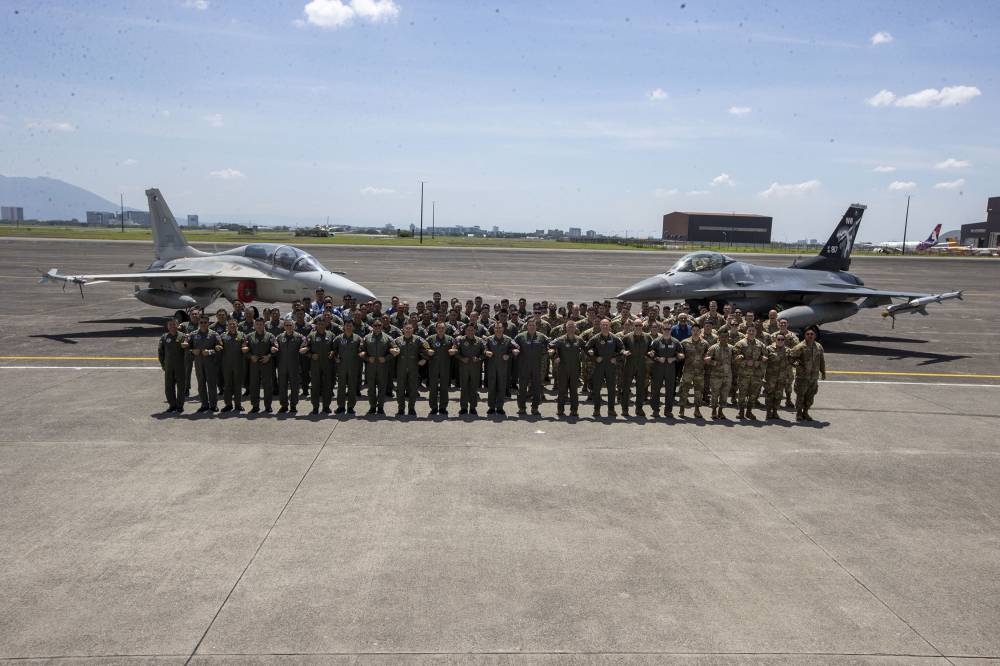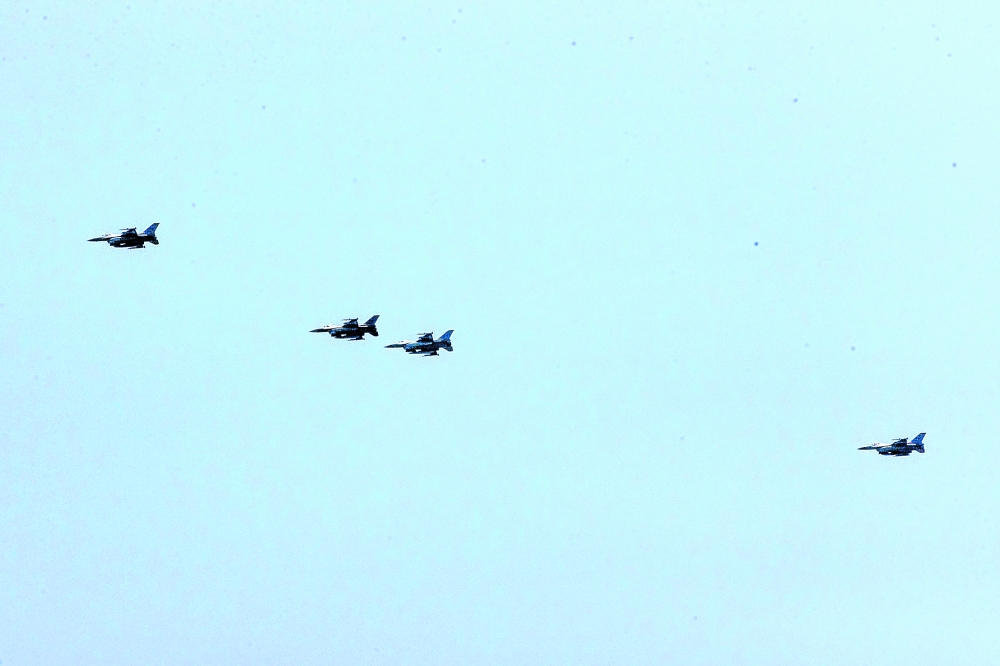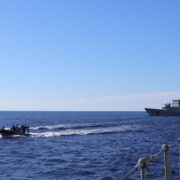PCG challenges Chinese ship amid ‘Cope Thunder’ drills

CLARK FREEPORT—The Philippine Coast Guard (PCG) on Monday said it deployed an aircraft to challenge a Chinese research vessel which appeared to be conducting a survey near Batanes, the country’s northernmost province nearest to Taiwan.
As this developed, the Philippine Air Force (PAF) launched its “Cope Thunder” bilateral exercise with its American counterpart in Clark Air Base, amid maritime tensions in the region caused by Beijing’s incursions beyond its waters.
Commodore Jay Tarriela, PCG spokesperson for the West Philippine Sea, said research vessel Zhong Shan Da Xue entered the Philippines’ exclusive economic zone on April 2 and has since stayed “in the northeastern part of the Philippines.”
Tarriela said the vessel was “seemingly navigating in a pattern resembling a reversed ‘D.’”
“Given [its] navigation pattern over the past five days, it can be inferred that the Chinese research vessel is likely conducting marine scientific research,” he said on X.
As of 11 a.m. on Monday, Zhong Shan Da Xue was tracked 169 kilometers (91.4 nautical miles) off the northeast coast of Itbayat, Batanes.
The Chinese vessel was sighted just a few days after Chinese fisheries research ship Song Hang was seen in the western part of the country.
On Sunday, the PCG was confronted by another incursion by China when its coast guard vessel blocked a PCG patrol ship near Panatag (Scarborough) Shoal off Zambales province, causing a near collision.
Senators Jinggoy Estrada and Francis Tolentino on Monday condemned Sunday’s incident.
Estrada said the government should raise the matter to the International Maritime Organization, while Tolentino said he supported “any plan to include Batanes in the upcoming Balikatan exercises with the United States.”
Taiwan is about 140 km north of Mavulis Island in Batanes, the Philippine territory closest to the self-governing island being claimed by China. This year’s Balikatan exercises will include rehearsing the defense of the province.
Comeback in air space
Monday’s Cope Thunder exercise featured a high-profile comeback by FA-50 light fighters of the Philippine Air Force (PAF) after a deadly crash last month.
The FA-50s buzzed in pairs over Clark Air Base alongside the US Pacific Air Forces (Pacaf) F-16 fighter jets as part of the kickoff event for Cope Thunder.

The FA-50 lead-in fighter trainers were cleared to fly on March 25 after more than two weeks that the entire PAF fleet was grounded following a crash in Bukidnon on March 4 that killed two pilots during a tactical night operation. The outcome of an investigation will be announced on Tuesday.
The drills began nearly a week after the US Department of State approved the potential sale to the Philippines of 20 fighters of the F-16C/D Block 70/72 variant as well as munitions for an estimated cost of $5.58 billion (around P332.7 billion).
Since Cope Thunder’s revival in 2023, this will be the first time this year that the joint exercise will host observers from allied countries including Australia, Japan, Malaysia and Indonesia.
Cope Thunder started as an annual exercise between the air forces of the Philippines and the United States in 1976 but it ended in 1991 due to damage from the Mt. Pinatubo eruption that year. The Senate, also at that time, had voted against extending the lease on US military facilities in Clark Air Base and Subic Bay.
‘Combat readiness’
In his speech at the start of the joint air drills, PAF chief Lt. Gen. Arthur Cordura said: “This year’s exercises focus on enhancing combat readiness and elevating joint mission effectiveness with clear objectives: that is to train hard, think forward and operate as one.”
Around 700 Filipino and 250 US airmen will take part in the exercise from April 7 to 18 in various locations in northern Luzon. The PAF will deploy four FA-50s, three A-29B Super Tucanos, one S-76A Sikorsky and one S-70i Black Hawk helicopter, while Pacaf will send 12 F-16 fighter jets.
“The lessons learned here will help shape our future operations and enhance our ability to respond to any crisis, natural disaster, or security challenges that may arise,” said Maj. Gen. Christopher Sheppard, Air National Guard Mobilization assistant to the commander of Pacaf.
PAF spokesperson Col. Consuelo Castillo said the FA-50s underwent a “very thorough inspection” and were “proven airworthy” before the grounding of the remaining 11 light fighters was lifted.
The country’s Air Force, once among the finest in the region, has long sought to acquire proper fighter jets for deterrence. It is currently using 11 South Korean-built FA-50 light combat aircraft after it retired its remaining fighters in 2005 because these were too old and costly to maintain.
The plan to acquire 40 multirole fighters has been a toss-up for years between the F-16s and Jas-39 Gripen of Sweden’s Saab, but the Philippines’ budgetary constraints have stalled a final deal.
AFP sources earlier said the planned acquisition of the multirole fighters under its Re-Horizon 3, or revised military capability upgrade plan, would be “multiplatform,” consisting of a “mixed fleet.” —WITH A REPORT FROM TINA G. SANTOS

















